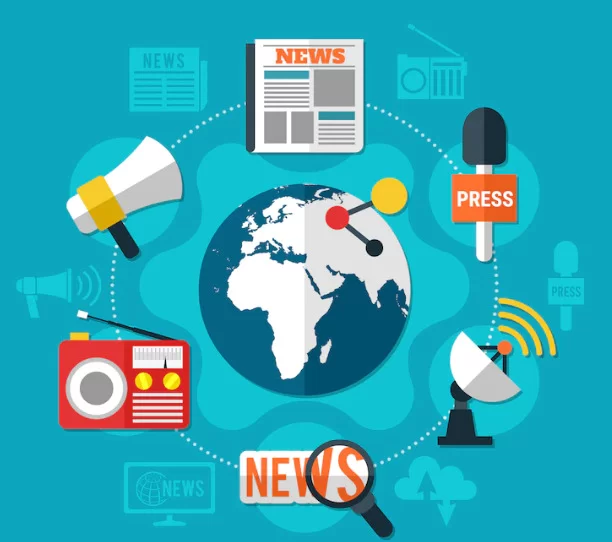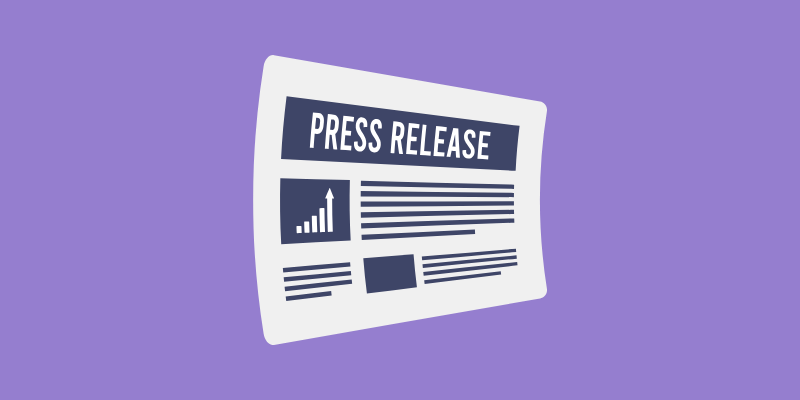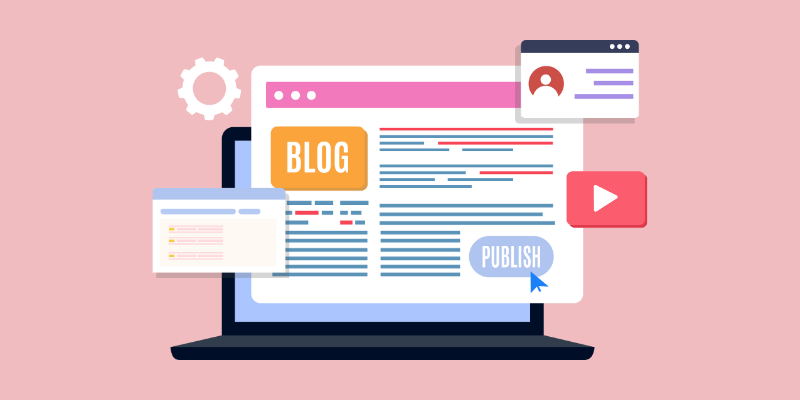Last Updated on 2 years ago by
The key to promoting corporate success and cultivating strong connections is effective communication. A press release is ageless in an era when more than 80% of the world’s population prefers to acquire their news online. It’s not just a powerful communication and marketing tool, but it can also help you influence the narrative surrounding your company.
News releases get the attention of prospects, clients, and the media, whether you’re announcing a new hiring, an event, or a collaboration. And, if you play your PR cards well, your brand’s reputation and good image will improve.
Are you stumped as to how to write a captivating press release that will generate interest for your company? This article will show you how to write a press release that gets attention from the media and excites the curiosity of potential customers. In addition, a content agency can assist you in writing a press release.
Step by Step: How to Write a Press Release?

A press release is a piece of news or an official written announcement released to the general public by a firm to media outlets. A news release, press statement, e-release, or media release is another name for a press release.
Any public relations (PR) and media communications plan should include press releases. They’re utilized to disseminate any positive news, statements, or announcements about a company to its customers. Press releases are still relevant in the age of social media, tweets, and podcasts. Any firm that wants to reach its target audience fast and efficiently may use press releases.
Using the media to raise your company’s profile is a viable method. News releases are used by both large and small businesses to attract the attention of journalists in order to enhance traffic and conversion. However, convincing a journalist to read your news is difficult, especially when they receive hundreds of e-mails a day asking for the same information. That means you’ll need to devote time and effort to draft a solid, effective press release for every one of your company’s key news stories if you want to get their attention. Let’s go through the stages for creating a press release, as well as some pointers on how to make yours stand out.
Define Target Audience
Before you begin writing a press release, the most critical step is to determine which aspect is most relevant to your target audience.
Remember that the angle (or point of view) that a specialized magazine’s readers would be interested in will be significantly different from that of a local newspaper’s readers. In reality, separate versions of your publication should be written for the various audiences you are targeting.
Press Release Structure
It’s also vital to comprehend the press release format in order to draft a successful news release. Following a conventional press release structure ensures that a journalist knows where to go in your release to discover what they’re looking for, allowing them to swiftly decide whether or not to cover your news. It also demonstrates that you’re a seasoned public relations professional who understands the ins and outs of a press release and that you’re likely to be pleasant to deal with.
Writing Stunning Headline
First and foremost, in order for your press release to be effective, it must have a compelling title. It’ll be the first thing they read, and based on that, they’ll decide whether or not they want to read the rest of the book.
Make an effort to make it brief. It’ll be simpler to read, it’ll appear more appealing, and people could even tweet about it if it’s under 110 characters long. Because the entire decision-making process takes around 3 seconds, make it fresh, newsworthy, and exciting.
In the headlines, it’s preferable to say less. Concentrate only on adding value, making it appealing, and establishing a hook for your intended audience. But if you use clickbait in your headlines, you risk losing journalists’ confidence as well as attracting the wrong audience.
Catchy Lead Paragraph
The lead is the second most crucial component of writing a press release. That’s where the eager will get the answers to the most pressing inquiries, such as the five W’s: what the news is about, who is involved, when and where it occurred, and why it matters.
Make sure to follow the ‘miniskirt rule’ while writing this section, which states that your lead should be long enough to include the fundamentals but brief enough to keep it intriguing. You don’t want to waste the journalist’s time; you want to stimulate their interest, not give them all the information at once.
Adding Quotes from Spokesperson
If your press release is based on outside sources, please be sure to credit them. As a result, you will gain credibility in the eyes of your audience. It’s critical to double-check that everything you’re connecting to isn’t bogus news.
Unless you’re attributing your sources at the bottom of your press releases, it’s not a good idea to display the entire URL. To make your links appear more natural, use anchor text.
Essentials in Body Paragraphs
Give your readers the information they need. By specifics, we mean the essential information needed to determine why this press release is noteworthy. You don’t need to write a novel; all you need to do is offer a concise explanation and pique the reporters’ interest in something they can write about.
Contact Details
Don’t forget to provide contact information so journalists may get in touch with you or anybody else who is worth contacting. It’s significant because they might want to inquire further about the narrative. If you overlook this step, your prospects of getting your release published are practically nil.
Inverted Pyramid Method
The inverted pyramid is a story structure in journalism in which the most significant information (or what may be termed the conclusion) is delivered first. A tale begins with the who, what, when, where, and why, followed by supporting elements and background information. This writing style differs from academic writing, for example, where an abstract may describe the key results, but the text often concentrates on the details first, leading to the conclusion at the end of the piece.
This writing style goes to the point and appeals to a wide range of readers. Even individuals with only a few minutes or an interest to read a single paragraph or even a single line will understand the plot. The inverted pyramid also aids editors when they need to trim a piece to suit a specific length for publication: if the paragraphs become less and less significant as the essay progresses, the item may be shortened at almost any point.
The inverted pyramid works well on the web, regardless of screen size. We all know that people don’t read everything they see on the internet. They don’t have much patience for stuff that doesn’t hold their attention. Users scroll only when they believe the material they want or require will be found on that page. All of these factors of user behavior are addressed by the inverted pyramid style.
The inverted pyramid style can be used to:
- Improved comprehension: Users may rapidly create a mental model and an overall knowledge of the material, making the specifics that follow simpler to comprehend.
- Reduce interaction costs: Users may comprehend the page’s key point without having to read for long periods of time.
- Encourage scrolling: By engaging the audience with the primary idea and bringing them into the details that follow, this structure might encourage scrolling.
- Organize your topics in a sensible manner: Starting with broad information sets the tone for the rest of the presentation. When the content is arranged to lure the visitor down the page, elements like anchor or jump links may become obsolete.
- Support skimming readers by allowing them to stop reading at any point on the page and still get the primary information.
On which topics can you publish press releases?
Press releases are important tools for getting your name out there. There are several sorts of press releases available depending on the story you wish to communicate. Product launch press releases are used by companies to publicize their new product, updates, or upgrades.
Big businesses like Apple and Nike still use press releases to offer new versions of their goods or announce upgrades, despite their massive followings and online communities. This sort of press release frequently includes appealing facts that entice readers to test the product.
Insightful press releases may even entice other journalists to try out the goods. As a consequence, individuals may be able to adapt their experiences into a more compelling narrative.
This press release should emphasize the product’s most interesting and noteworthy features, such as:
- Specifications and features of the product
- Benefits of the product and how they set your company apart from the competition
You might send out a press release after rebranding or introducing a new product update to inform your consumers and other stakeholders.
It doesn’t matter if the upgrade or rebranding was prompted by a merger, acquisition, or shift in strategic direction. Your press release should do the following:
- Highlights the product’s significant and small adjustments.
- Explains why these modifications were made by your firm.
- Gets your audience enthused by discussing what consumers and investors can expect from the improvement and how it will benefit them.
- Includes additional information such as pricing, technical support, updated brand guidelines, and other pertinent information.
A press conference is a terrific method to get the word out to the general public. This press release should include all pertinent information on the new entity’s growth and future plans.
When announcing collaborations, acquisitions, or mergers, be sure you include the following information:
- Include specific details about all of the parties involved.
- Discuss the partnership’s, merger’s, or acquisition’s terms, including remarks from the management teams.
- Explain why you choose to partner or establish a new organization, and what this new arrangement will entail for your consumers, media, and other stakeholders.
- Discuss how customers will benefit from new products, services, or experiences.
An event press release is used to promote an event that your company is organizing, attending, supporting, or covering.
They are an important aspect of event marketing since they attract media attention from news outlets and other sources.
The purpose is to raise public awareness and encourage people to come. Press releases for events can also be used to invite the media to cover your event.
The crucial elements (what, where, and when) regarding an event should not be buried inside the tale. An event press release should, at the very least, provide information about the event.
- Why should people come to your event?
- Who should come to your event, and what will they get out of it?
- When will it be held and where will it be hosted?
A press release is required when a company opens a new office or relocates to a new location. The date, time, and venue of the event should be announced in your media release. It should also explain why the company is moving to a new site, how to get there, and what activities will be held for the grand opening.
It’s fine to brag when your organization wins an award or an honor. After all, you’ve put in a lot of effort to obtain these honors. With an award press release, you can get the word out about your accomplishments and create a buzz.
Press releases recognizing prizes and achievements contribute to the development of trust and credibility. It also identifies your business as a leader in your field. Your press statement should include information about your firm as well as the reason for your selection for the award. Also, be sure to include additional information regarding the ceremony.











